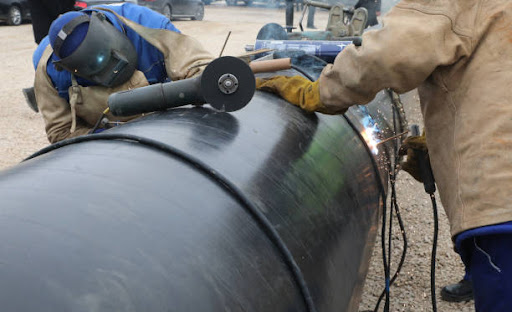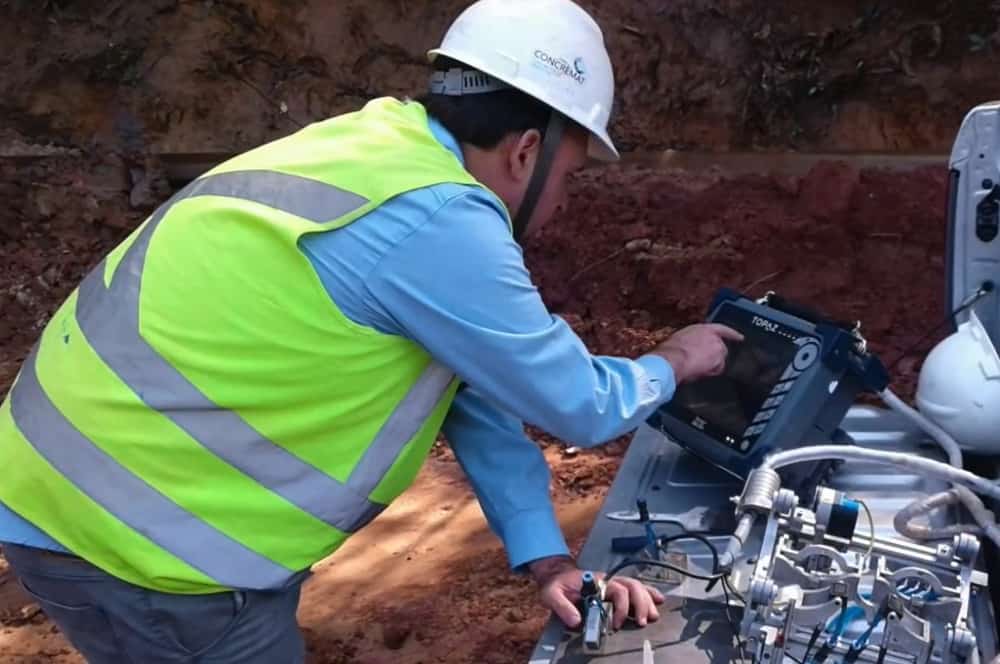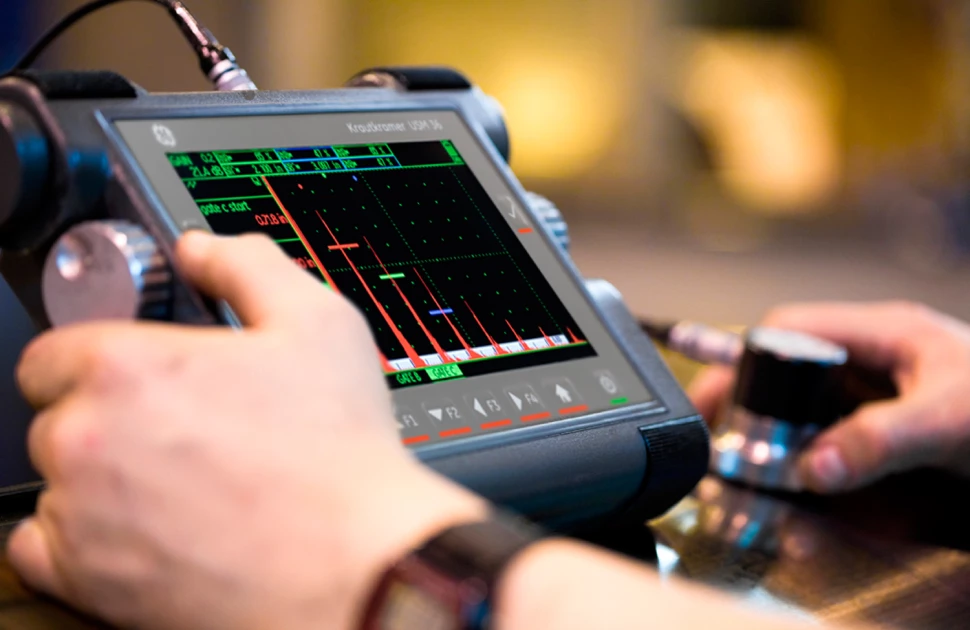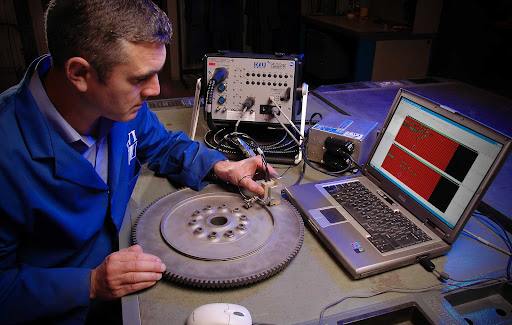Table of Content
- Introduction
- About Ultrasonic Testing
- What is Standard UT Testing?
- Advantages of Ultrasonic Testing
- About Eddy Current Testing
- Difference Between Ultrasonic Testing vs Eddy Current Testing
- Advantages of Eddy Current Testing
- Key Takeaways
- FAQs
Introduction
Ultrasonic Testing vs Eddy Current Testing, in the era of Non-destructive Testing (NDT), choosing between Ultrasonic Testing (UT) and Eddy Current Testing (ECT) is quite phenomenal.
Both methods play pivotal roles in ensuring the structural integrity of materials and components.
There are intricacies of Ultrasonic Testing Inspection, and eddy current testing to help you make the right choice for industrial needs.
About Ultrasonic Testing
Ultrasonic Testing Procedure is based on essential details and grasping its fundamental principles in accordance with high transmissions.
This method involves the transmission of high-frequency sound waves through a material to identify internal flaws or gauge thickness.
It is particularly effective for ultrasonic testing for welds and steel and Ultrasonic Testing on Tanks/Pipeline.
Ultrasonic testing and Ultrasonic Testing Terminologies may face challenges with materials with rough surfaces or coarse grain structures.

What is Standard UT Testing?
Standard Ultrasonic Testing uses a systematic approach, as it employs the principle of sending ultrasonic waves into a material and then analyzing the reflections to detect irregularities.
This method is particularly effective for subsurface defect detection and thickness measurement.
There are many Applications for Underwater Ultrasonic Testing that are most commonly and widely used these days.
Advantages of Ultrasonic Testing
Ultrasonic Testing has several advantages. It offers high accuracy and sensitivity, making it suitable for identifying small defects.
Here are a few advantages of the ultrasonic test.
1. High Accuracy and Precision
Advanced technology has propelled ultrasonic examination to provide accurate and precise results.
Industries relying on precise measurements, such as the Aerospace Industry and automotive, greatly benefit from the reliability of Ultrasonic Non-destructive Testing contributing to enhanced product quality.
2. Detection of Internal Defects
Ultrasonic Testing Equipment excels at identifying internal defects that may be invisible to the naked eye.
This includes cracks, voids, and other hidden flaws that could compromise the functionality of materials.
Early detection through UT prevents catastrophic failures and ensures safety.
3. Versatility in Material Testing
Ultrasonic Testing is not limited to specific materials; it exhibits versatility in testing various substances, including metals, plastics, and composites.
This adaptability makes Ultrasonic Inspection a universal solution for industries with diverse material requirements.

4. Minimal Surface Preparation
Unlike some NDT Testing Methods that demand extensive surface preparation, NDT ultrasonic testing minimizes these requirements.
This not only saves time but also reduces costs associated with preparing materials for inspection.
Ultrasonic Non-destructive Testing efficiency is particularly valuable in large-scale manufacturing.
5. Real-Time Results
The ability to obtain real-time results is a standout feature of Ultrasonic NDT Testing.
Immediate feedback during the testing process allows for prompt decision-making, enabling industries to address issues on the spot and maintain production efficiency.
6. Cost-Effectiveness
Beyond their accuracy and versatility, ultrasonic testing methods prove to be a cost-effective solution.
While the initial investment in Ultrasonic Testing Equipment may seem significant, the long-term savings in material preservation, reduced downtime, and prevention of costly failures make it a financially sound choice.
7. Safety in Operation
Safety is paramount in industrial processes, and ultrasonic inspection future prioritizes this aspect.
The non-destructive nature of Ultrasonic Testing Applications minimizes the risks associated with testing, ensuring the well-being of operators and the surrounding environment.
About Eddy Current Testing
Eddy Current Testing operates on electromagnetic principles, inducing electrical currents in conductive materials.
This method is commonly used in industries dealing with materials like aluminum and steel, where it excels at identifying surface cracks and evaluating the integrity of components.
The relationship between eddy current testing and Radiographic Testing is crucial for industries relying on NDT Technique.
Radiographic Testing techniques excel at penetrating thick materials, but excessive thickness can lead to longer exposure times and increased radiation doses.
While radiographic testing NDT is essential for assessing internal structures in thick materials. Radiography Testing Method exposure is crucial for the NDT test.

Difference Between Ultrasonic Testing vs Eddy Current Testing
Ultrasonic Testing vs Eddy Current testing, here are the few major differences between UT and ECT.
1. Material Thickness
Ultrasonic Testing vs Eddy Current testing, when it comes to material thickness, Ultrasonic Testing is often preferred for its ability to assess thickness with precision.
It is suitable for a broad range of thicknesses, making it versatile for applications.
2. Consumables
Ultrasonic testing typically requires coupling agents to facilitate the transmission of sound waves.
In contrast, Eddy Current Testing doesn't involve direct contact with the material, reducing the need for consumables and making inspections more efficient.
3. Safety
Both Ultrasonic Testing and eddy current testing are generally safe when performed by trained professionals.
However, ultrasonic testing may require direct contact, which could present safety considerations, especially in certain environments.
Advantages of Eddy Current Testing
Here are the main advantages of Eddy Current Testing for quality control and flaw detection.
1. High Sensitivity to Surface Defects
ECT is exceptionally sensitive to surface irregularities and defects.
It can detect minute cracks, Corrosion, and other imperfections that may be invisible to the naked eye.
This high sensitivity ensures thorough and precise inspections.
2. Rapid Inspection Process
Eddy Current Testing allows for swift and efficient inspections.
Its non-contact nature and ability to cover large areas quickly make it ideal for high-volume production environments, reducing downtime and increasing overall efficiency.

3. Adaptability to Various Materials
One of the standout features of ECT is its adaptability to a wide range of materials.
Whether inspecting conductive metals, alloys, or even non-ferrous materials, Eddy Current Testing provides reliable results across diverse material types.
4. Minimal Surface Preparation Required
Unlike some NDT Testing Methods that demand extensive surface preparation, ECT requires minimal to no surface preparation.
This not only saves time but also minimizes the impact on the material being tested, preserving its structural integrity.
5. Versatility in Applications
ECT finds applications across various industries, including aerospace, automotive, manufacturing, and electronics.
Its versatility makes it a go-to choice for inspecting a wide range of components and structures.
Sometimes it is used with a combination of Radiographic Testing Services.
Key Takeaways
- Ultrasonic testing and Eddy Current Testing are pivotal players in ensuring material and component structural integrity.
- UT relies on high-frequency sound waves transmitted through materials, revealing internal flaws and measuring thickness.
- Standard UT involves sending ultrasonic waves into a material, and analysing reflections to detect irregularities.
- Ultrasonic Testing boasts high accuracy and sensitivity, making it ideal for precise measurements.
- Eddy Current Testing induces electrical currents in conductive materials, prominently used in industries dealing with materials like aluminum and steel.
- The relationship between ECT and Radiographic Testing is crucial.
- UT is preferred for its precision in assessing thickness across a broad range, while ECT is versatile for surface crack identification.
- UT may require coupling agents, while ECT, involving no direct material contact, is more efficient in consumable use.
- Both NDT Methods are generally safe but UT, requiring direct contact, may present safety considerations, especially in specific environments.
FAQs
1. What is eddy current testing used for?
A: Eddy Current Testing is commonly used for detecting surface cracks and evaluating the integrity of conductive materials, particularly in industries like Automotive Manufacturing and aerospace.
2. Which NDT Technique is best?
A: The choice of the best Non-destructive Testing (NDT) Technique depends on the specific application.
Ultrasonic testing is often considered excellent for subsurface defect detection, while other methods like eddy current testing excel at surface-level inspections.
The best technique varies based on the material and the type of defect being examined.
3. What are the two types of UT?
A: Ultrasonic Testing comprises two main types: A-scan, which displays the amplitude of the ultrasonic wave against time, and B-scan, which provides a two-dimensional cross-sectional view of the material being tested.
Each type serves specific purposes in the inspection process.
4. What is the principle of UT testing?
A: The Principle of Ultrasonic Testing involves the transmission of high-frequency sound waves into a material.
The waves propagate through the material, and the reflected waves are analyzed to identify internal flaws or assess thickness.
It relies on the reflection of sound waves to detect variations in the material's properties.
5. What is the difference between NDT and UT?
A: Non-destructive Testing is a broad category encompassing various techniques for inspecting materials without causing damage.
Ultrasonic testing is one specific method within NDT.
While NDT refers to the overall concept of non-destructive inspection, UT specifically involves the use of ultrasonic waves for testing the integrity of materials.









